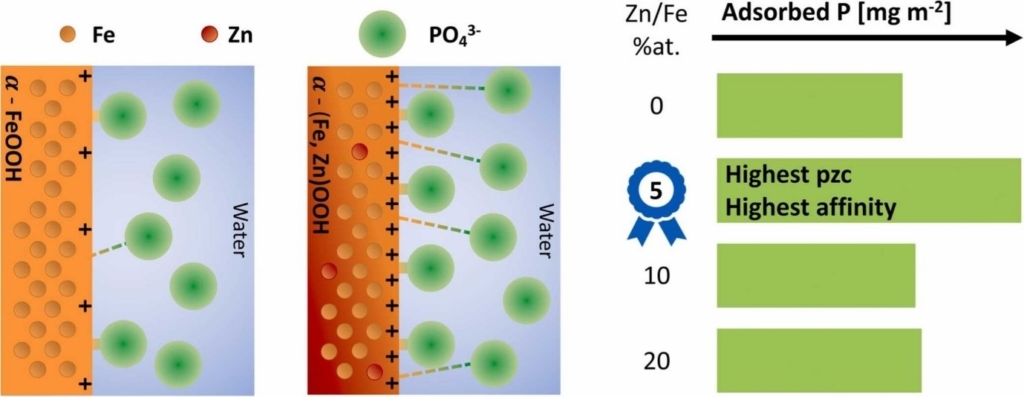Excess phosphorous in natural waters is generally present in low concentrations, but still high enough to cause eutrophication and algae bloom. Adsorbents with high affinity are the way forward for removing P to the necessary ultra-low concentrations to prevent eutrophication. Following previous results showing improved affinity and capacity for P when doping goethite with Zn, Wetsus scientists investigated the optimal Zn-for-Fe substitution percentage, to tailor surface properties, while preserving the stable goethite phase. Notably, at 5% at. Zn doping, goethite exhibited optimal phosphorus removal efficiency, surpassing pure and highly substituted goethite. Regeneration tests further demonstrated sustained or improved phosphorus desorption. Lastly, Mössbauer spectroscopy confirmed that 5 %at. Zn-forFe substitution preserved the goethite phase (as opposite to higher substitutions percentages), and that the sample was stable throughout the adsorption and regeneration processes. This discovery holds promise for developing a stable and effective Zn-doped goethite-based adsorbent, crucial for addressing phosphorus pollution, especially at ultra-low concentrations.
Read more:
Belloni, C., L. Korving, G. J. Witkamp, E. Brück, and A. I. Dugulan. 2024. “Zn Induced Surface Modification of Stable Goethite Nanoparticles for Improved Regenerative Phosphate Adsorption.” Colloids and Surfaces. A, Physicochemical and Engineering Aspects 687 (133476): 133476. https://doi.org/10.1016/j.colsurfa.2024.133476.
